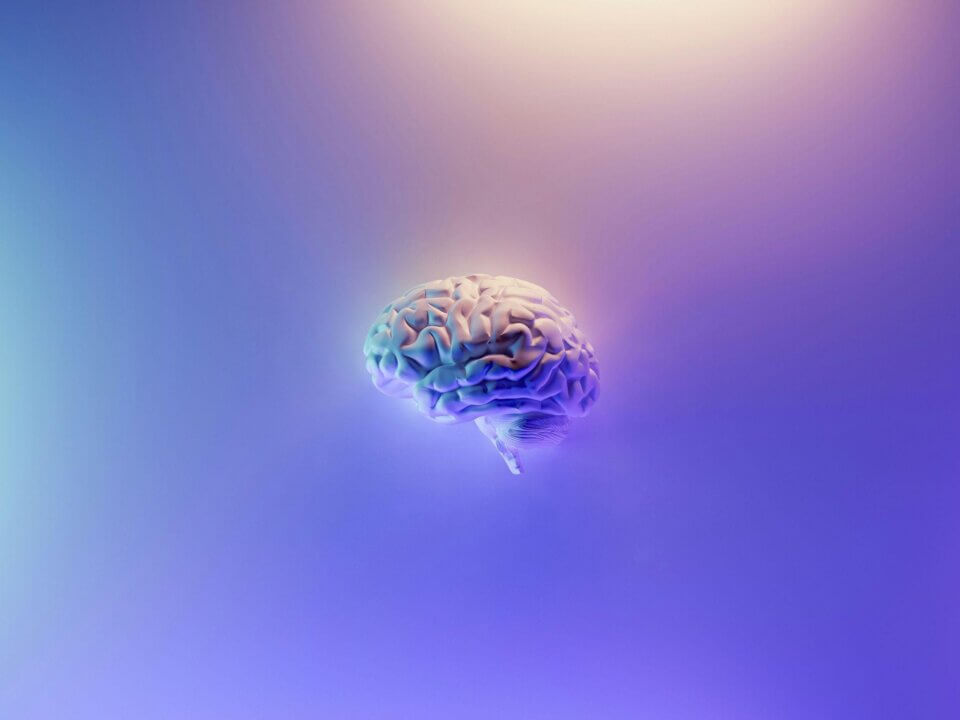
Ode To Single Moms
March 23, 2021
The Shame, Sadness and Isolation of Infertility
April 22, 2021The Amygda-whaaaat?:
An explanation of what the Amygdala is,
why it goes Rogue and how to "ReTrain it"
What is the Amygdala?
The amygdala is a collection of nuclei near the base of the brain – the limbic system - where emotions are given meaning, remembered and attached to associations, as well as responses to them (emotional memories). The amygdala is also known for its role in the processing of fear.
The amygdala is a wonderful thing; it is the part of our brain that tries to protect us from danger. It develops early in life to sense danger, and when it senses it, it fires stress hormones that put our bodies in action to protect us.
In infants, a distress cry helps signal to caretakers to come "save" them. In toddlers, this same response may show up, or they may attempt to "flee" the danger by crawling away. Later in life, a "fight" back response might show up in anger or conflict.
Our Caveman Brain
However, the amygdala is fairly simple in its evaluation of danger. Feeling alone, as well as sudden or unexpected loud noises or fast movements, and unknown situations can all kick the amygdala into action. Evolutionarily speaking, these are helpful "danger" signals to have. Our cavemen ancestors needed the amygdala to help with quick reactions to violent, large, or fast predators or threatening groups, which could be the difference between living or dying.
Our amygdala is also very responsive to emotional stimuli. Strong negative emotions caused by a situation (for example, falling down a flight of stairs or being made fun of during a class presentation) can cause us to create very protective "connections" between situations and danger.
It can also create strong urges to "escape" from similar situations-for example avoiding stairways or feeling panicky about class presentations. Effective parenting aids children in helping through these moments, soothing the child's emotions, and creating more empowerment when there is no danger. This type of parenting also allows children to begin to understand what is inherently dangerous or not. This way, we begin to master situations and difficulties more effectively and stay safe. Later on, this modeling from our parents can help our logical, evaluative, mature brain decide whether there is inherent danger or not and to continue in this soothing and empowerment-based way of tackling tough situations.
The Adult Brain and the Amygdala
But what happens when this logical side gets overrun by our emotions and amygdala as adults? When anxiety shows up as anger, or feeling out of control or panicky in inopportune moments? What causes this? Neuroscience shows that this can happen and happens much more often for individuals where the soothing presence of parents was not provided effectively, or where moments of anxiety were responded to with shame, lack of validation and soothing, or punishment by parents. If the body does not have a model for how to soothe this "protector" when it's not needed, we begin to learn to either ignore its signals, suppress it till it shows up in other ways (e.g. anger) or listen to it blindly.
In moments where the amygdala takes over, it is also common to bring in the type of parenting we were given as a child when this happened. Many times self-shaming takes over, either shutting down a working response (there is an actual danger we need to listen to) or causing the amygdala to fire more. This is because high shame or distress causes the same "alert" mode in the amygdala as other negatively charged emotional events. Research has shown it creates a positive feedback loop, where the amygdala goes on high alert, and shame reinforces that it should stay in a freeze, flight, or fight mode. Shame from peers, romantic, partners, or others around us can also create this same reaction. In sum, we stay in distress mode.
How to Calm the Amygdala
So how do we calm this system? We need to engage in "reparenting" and comforting our amygdala! It can be helpful to think of your amygdala as a wonderful protective child, but one that "cries wolf" sometimes and needs some help.
Here are some tips to help engage in self-soothing and "reparenting" work when the amygdala is on high alert:
- Validate the feeling whatever it is (fear, anger, anxiety, etc.). This is key -- validation allows you to tune into the emotion and figure out what is triggering it and move on to step two where you can assess whether there is actual danger or not. Ignoring or suppressing the emotions means you also suppress moments where actual danger is present, and this suppression might lead to the fear showing up another way (rage, depression, etc)
- Assess for actual danger. Perhaps frustration or anger from a partner causes fear or anxiety and reminds you of conflict in your home growing up. Your child brain at that time had no control, or perhaps you remember anger led to unhealthy or abusive behaviors in adults at that time, so this fear reaction makes sense. However, perhaps now just engaging in conversation with a partner who is upset is not dangerous, but rather just uncomfortable.
- Practice mastery of situations. By validating the negative emotion or fear, assessing for actual danger, and if it's not present saying something like "you are safe, you are okay" you can begin to engage in your environment in a calmer way. Furthermore, fears will subside more easily with exposure to the fear, seeing you can get through it, and working to engage in it more often. Picture yourself as a child, and engage in "cheering" yourself on as you do this. Be sure to practice patience and gentleness with yourself, and ask those around you for the same as you do this.
- Finally, thank the amygdala! It might be frustrating to have it on high alert at times, but there are times when you will need it!
References:
Veenstra, G. "Integrating Family Systems and Neuroscience in Anxiety" Retrieved 4/1/2021 at Aamft.org




